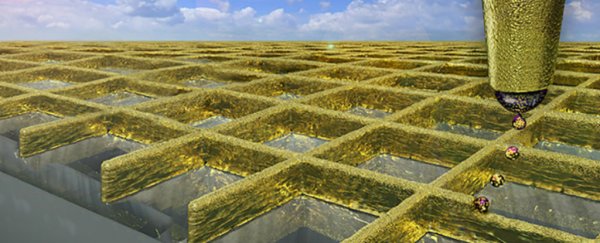New touchscreen technology that has the potential to improve display transparency and sensitivity has been developed by researchers in Switzerland, thanks to a specialised microscopic 3D printing technique. If these new nano-sized, gold and silver grid materials can be made to work commercially, the research could end up influencing future generations of smartphones, tablets, and wearables.
The new printing technique is called Nanodrip, and it uses a system similar to those in household inkjet printers to push out grids of electrohydrodynamic ink (ink that can be electrically charged). These nanowalls of electrodes are made with gold or silver rather than the traditional indium tin oxide to substantially improve the overall conductivity of the material, while making it more transparent.
The addition of the third dimension and the application of the 3D printing technique are key: gold and silver are not transparent, but by building up grids of nanowalls that are 80-500 nanometres thick, the team from the ETH Zurich University has produced a material with the required level of conductive performance and transparency.
"If you want to achieve both high conductivity and transparency in wires made from these metals, you have a conflict of objectives," said project leader Dimos Poulikakos. "As the cross-sectional area of gold and silver wires grows, the conductivity increases, but the grid's transparency decreases."
The droplets produced by the Nanodrip process are about 10 times smaller than the aperture itself, pushing out microscopic metal nanoparticles in a solvent mixture. As the solvent evaporates, the three-dimensional gold or silver structure remains. By balancing the composition of the metallic ink with the charge of the electromagnetic field used to draw it out of the printing device, the researchers were able to create incredibly small droplets.
"Imagine a water drop hanging from a tap that is turned off. And now imagine that another tiny droplet is hanging from this drop - we are only printing the tiny droplet," said Poulikakos.
As you might expect, the next challenge is in proving that the process can be upscaled and applied on an industrial level. But the team is confident that the Nanodrip technology will eventually work out to be more cost-effective than current touchscreen manufacturing processes. It could also be useful in the production of solar cells and other scenarios where transparent electrodes are required.
The research has been published in the journal Advanced Functional Materials.
